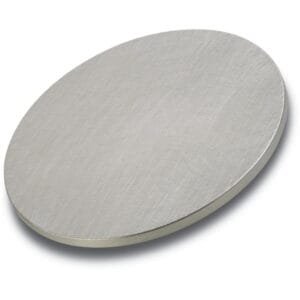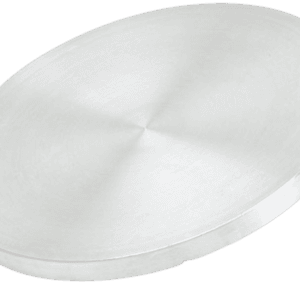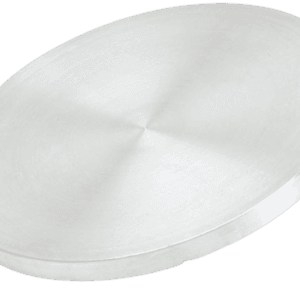Molybdenum Aluminium (Mo/Al) Sputtering Target Description
TFM offers Molybdenum Aluminium (Mo/Al) sputtering targets that are precision-engineered for high-performance thin film deposition. These alloy targets combine the excellent thermal and mechanical properties of molybdenum (Mo) with the lightweight conductivity and reactivity of aluminum (Al), making them ideal for use in microelectronics, display coatings, barrier layers, and contact materials.
Mo/Al alloy targets are particularly suited for applications requiring:
Thermal and chemical stability in high-temperature environments
Tunable electrical resistivity for contact and barrier films
Improved adhesion to substrates in multilayer deposition systems
Reactive or inert atmosphere sputtering processes (e.g., PVD, DC magnetron)
Molybdenum Aluminium Sputtering Target Specification
| Property | Value |
|---|---|
| Chemical Formula | Mo/Al Alloy (e.g., 70:30, 80:20, 50:50 by weight or atomic %) |
| Purity | ≥ 99.9% (3N) total metal basis |
| Form | Alloyed or composite sputtering target |
| Appearance | Silver-gray metallic solid |
| Density | ~7.5–9.5 g/cm³ (depending on composition) |
| Melting Point | Depends on alloy ratio (Mo: 2623 °C; Al: 660 °C) |
| Available Sizes | Dia.: 1″, 2″, 3″, 4″, 5″, 6″ Thick: 0.125″, 0.250″ or per request |
| Compositions Offered | Mo:Al = 70:30, 80:20, 90:10, or custom ratios |
| Backing Plate Options | Available with Cu, Mo, or stainless steel backing plates |
Customized target sizes and compositions are available upon request.
Mo/Al Sputtering Target Handling Notes
Bonding to a backing plate is strongly recommended to reduce cracking and ensure thermal transfer during deposition.
Avoid exposure to moisture or air for extended periods; store in an inert environment.
Handle with gloves to prevent surface contamination.
Molybdenum Aluminium Sputtering Target Packaging
TFM’s Mo/Al sputtering targets are vacuum-sealed or packaged under inert gas to prevent oxidation. Each item is cushioned and boxed securely to avoid mechanical damage during transportation. Clear labeling ensures traceability, including batch number, composition, and purity.
Get Contact
At TFM, we manufacture and supply Molybdenum Aluminium sputtering targets with custom alloy ratios, sizes, purities, and bonding configurations tailored to your deposition system.
Contact us today for a quote or to learn more about integrating Mo/Al alloys into your next thin film project.


 MSDS File
MSDS File



Reviews
There are no reviews yet.